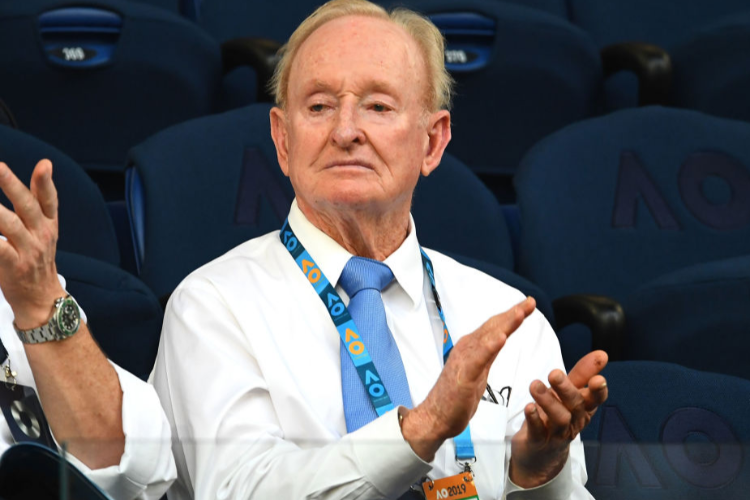3 minute read
The legendary Rod Laver says he wouldn't have achieved what he has in tennis had he not left the amateur ranks in 1962 to join the sport's 'big boys'.

Rod Laver has recalled how 13 straight losses to one of tennis's "big boys" transformed him into the legend he is today.
Fifty years after man first first stepped on the moon and after Laver became the first - and still only - man in professional tennis to complete a calendar-year grand slam sweep, the Rockhampton Rocket was feted for his unique feat at a ceremonial lunch in in New York.
"It's amazing. It was a thrill just to play in all four tournaments," the humble champion said of winning the Australian Open, French Open, Wimbledon and US Open in 1969, having also claimed all four as an amateur in 1962.
Tired of earning a modest 25 shillings a day while representing Australia in Davis Cup, Laver decided to turn pro in 1962 after leading his country to a third successive title - unbeaten on each occasion in singles and doubles.
One can only imagine how many more than the 11 major titles he wound up with that Laver would have accrued during his so-called "lost years" between 1963 and 1967.
But he has no regrets.
"There was no money in it, so I realised I had to turn professional," Laver said on Tuesday.
"That was when I decided to go with the big boys.
"That was probably the best thing that ever happened to me because my game improved so much."
Joining Jack Kramer's World Tennis Championship and playing night after night across the United States in "one-night stands" - and getting repeatedly beat up by Lew Hoad, Ken Rosewall and Pancho Gonzales - was the making of Laver.
"I remember playing Lew 13 times, I think, and I couldn't beat him once," he said.
"I knew that playing him there, I was going to be surprised.
"But I never thought I'd lose 13 in a row and that's when I looked at myself and my game and I said: 'I've got to do something about this'.
"That's when I got together with my own mind and said 'how are you losing these matches?'
"It was a big learning curve."
Six years later, and after being one of the pioneers of the open era in 1968, Laver accomplished the greatest feat in tennis, one that half a century later not even Roger Federer, Rafael Nadal or Novak Djokovic can boast of.
And the 81-year can still barely believe it, especially beating Rosewall - "probably" his toughest opponent - in the second leg of the slam in Paris.
"He was certainly better than me on clay," Laver said.
"So I thought I had to do something a little bit different and that's when I decided I was going to almost hit out all the time and that's what I did; I hit it as hard as I could every time and that was probably the one thing that probably surprised Ken.
"I played him a lot of times on clay and to beat Ken in straight sets at the French, it was certainly a thrill and an unusual win at that stage."
Having already defeated Tony Roche in a marathon 90-game semi-final on his way to winning the Australian Open, Laver was halfway towards the slam.
After beating a third countryman, John Newcombe, in the Wimbledon final, Laver was a US Open title away from the fabled feat, which he achieved with a another triumph over Roche in the championship match.
"The greatest champion our sport has known," is how Federer describes Rodney George Laver MBE.





